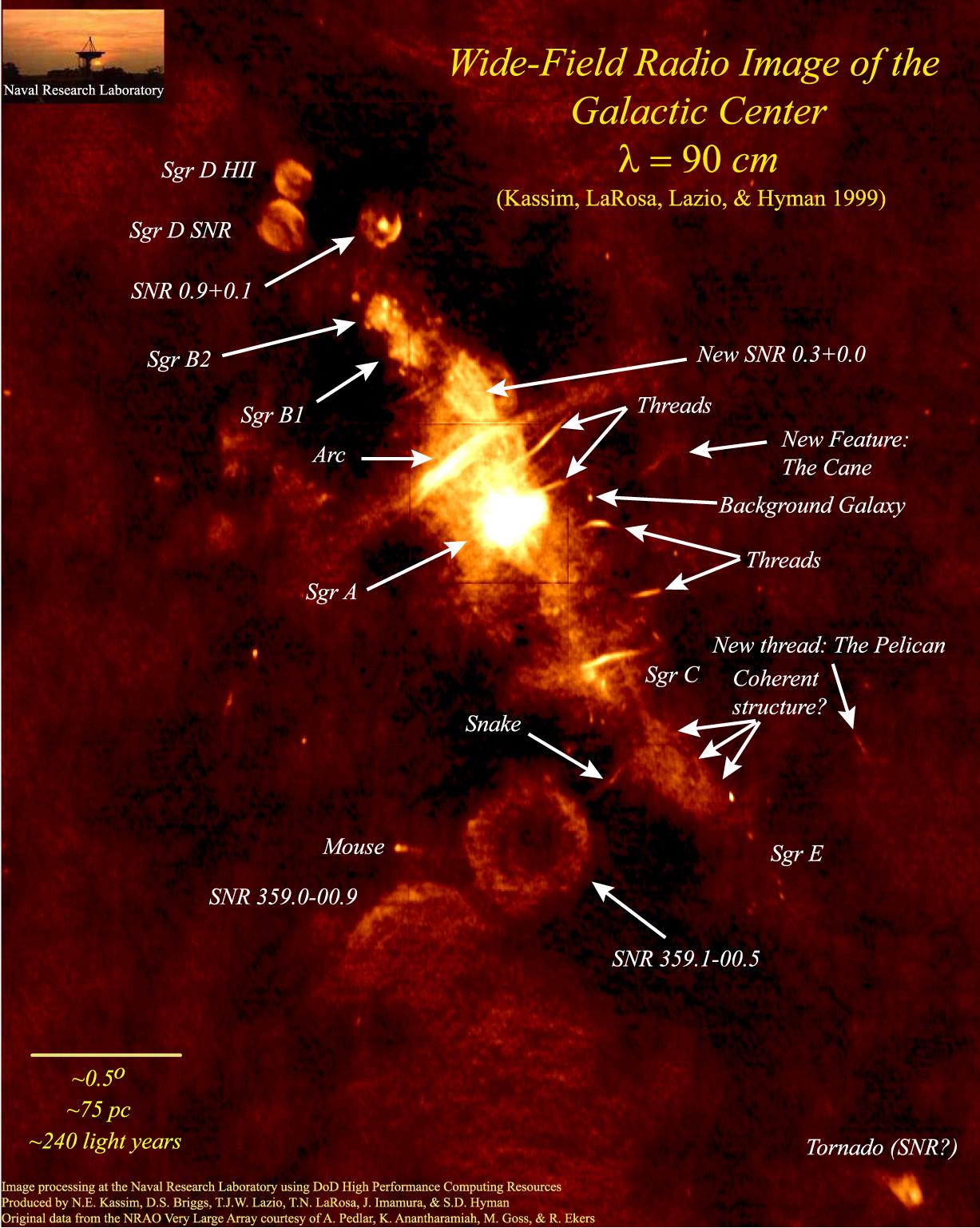
Galaxies
The Center of Our Milky Way Galaxy:
Radio waves can penetrate through the dust that obscures the galactic center from our view in visible light. The picture below was made by the VLA radio telescope using 90 cm wavelength radio waves. It shows a 4 degree by 4 degree region around the galactic center. This is about 1920 light years X 1920 light years in size.

The next picture is a close view of the radio arc arching near the bright radio source Sagittarius A.
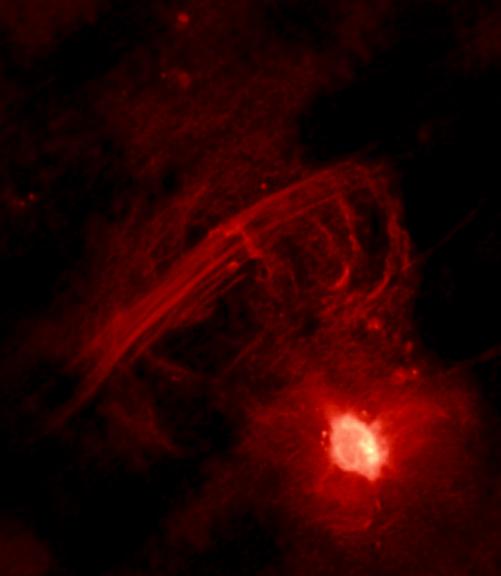
The next image from the Chandra x-ray telescope shows a 400 LY by 900 LY region of the galactic center in x-rays. The image shows white dwarfs, neutron stars and black holes in an incandescent fog of multi million-degree gas. The white patch in the center contains the black hole Sagittarius A*.
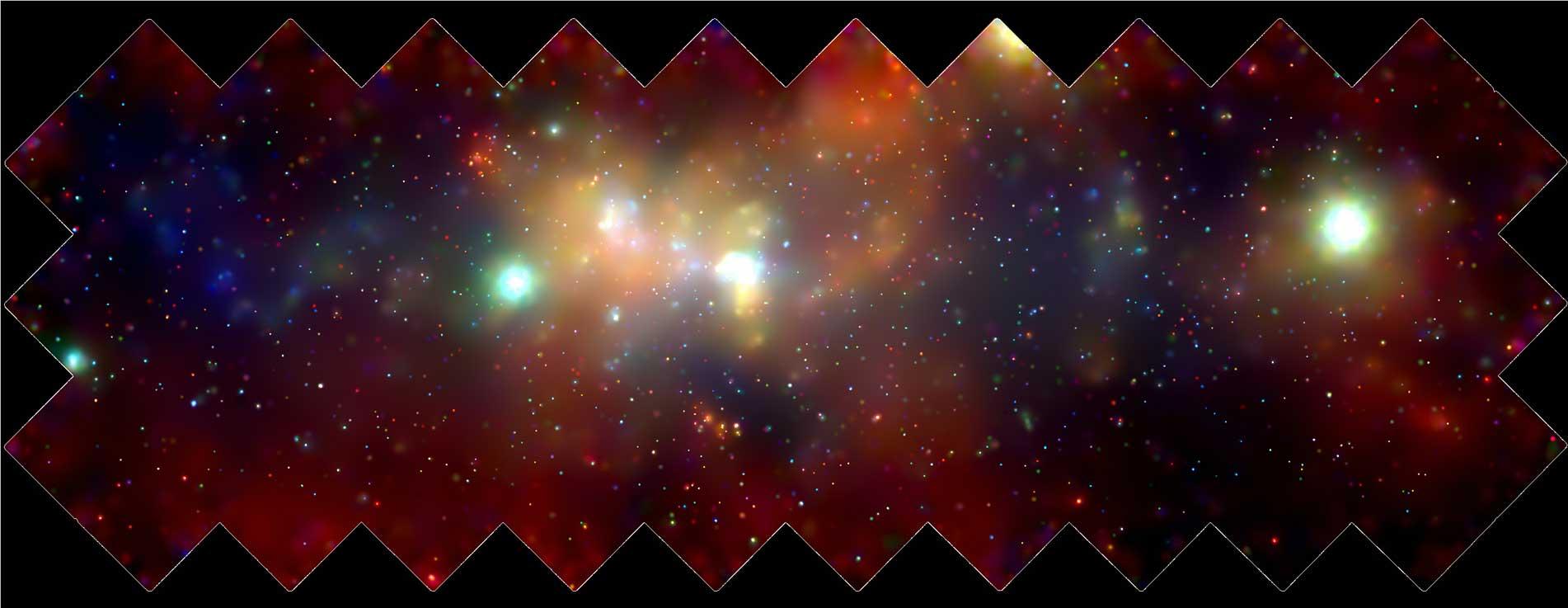
The next Chandra x-ray image shows the innermost 10 LY of the galactic center. An extended cloud of hot gas surrounds the black hole Sagittarius A* which is the white dot at the center.
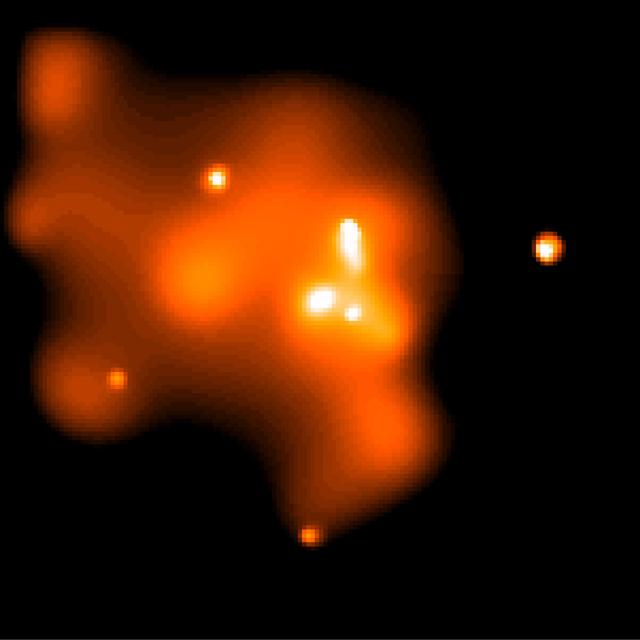
The next picture is a view of the very center of the Milky Way obtained in mid 2002 from a combination of three infrared wavebands. The compact objects are stars, and two yellow arrows mark the location of Sagittarius A*, the black hole candidate within the radio source Sagittarius A. We can see objects within one light year of the galactic center! In this image one light year equals 8 arc seconds.

The next picture is another infrared image looking even more closely at the Milky Way's center. Black hole candidate Sagittarius A* is marked with a cross. The width of the picture is about 70 light days or about 0.2 light years.
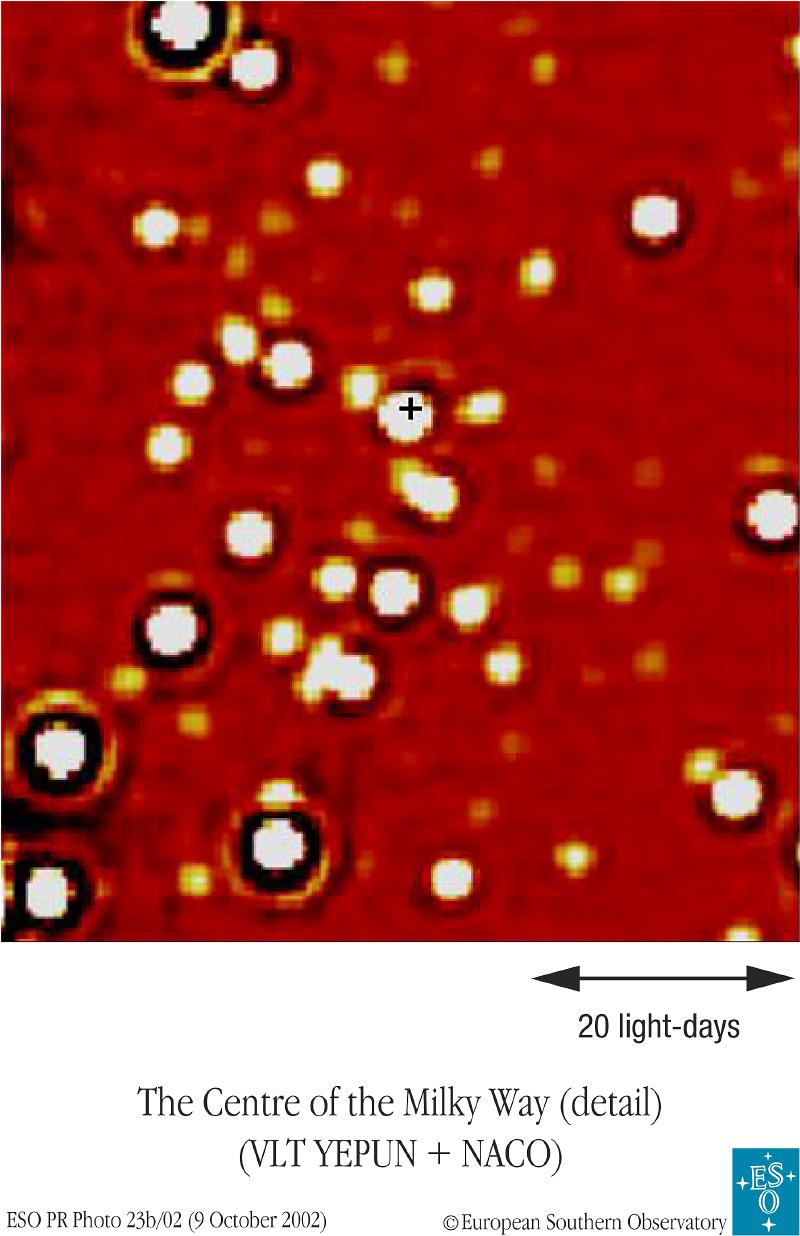
The next amazing picture shows the observed orbit of a star called S2 around the black hole candidate Sagittarius A*. Star S2 is about 7 times the diameter of our Sun and has 15 times the mass of our Sun. The elliptical orbit (with an eccentricity of 0.87 and an inclination of 46 degrees) of S2 has been observed since 1992, and about two thirds of its 15.2 year orbit has been traced out. The closest approach happened in early 2002 when S2 came within about 17 light hours of Sagittarius A*! 17 light hours is about 123 astronomical units, or about 1.5 solar system diameters! This is a close approach, but S2 was still about 64 times more distant from Sagittarius A* than the tidal disruption distance of 16 light minutes. From the observed orbits of S2 and other nearby masses the mass of Sagittarius A* can be calculated to be 2.6 million solar masses with an uncertainty of .2 million solar masses. The conclusion is that Sagittarius A* is a 2.6 million solar mass object smaller than 1.5 solar system diameters! Sure does look like a black hole!
